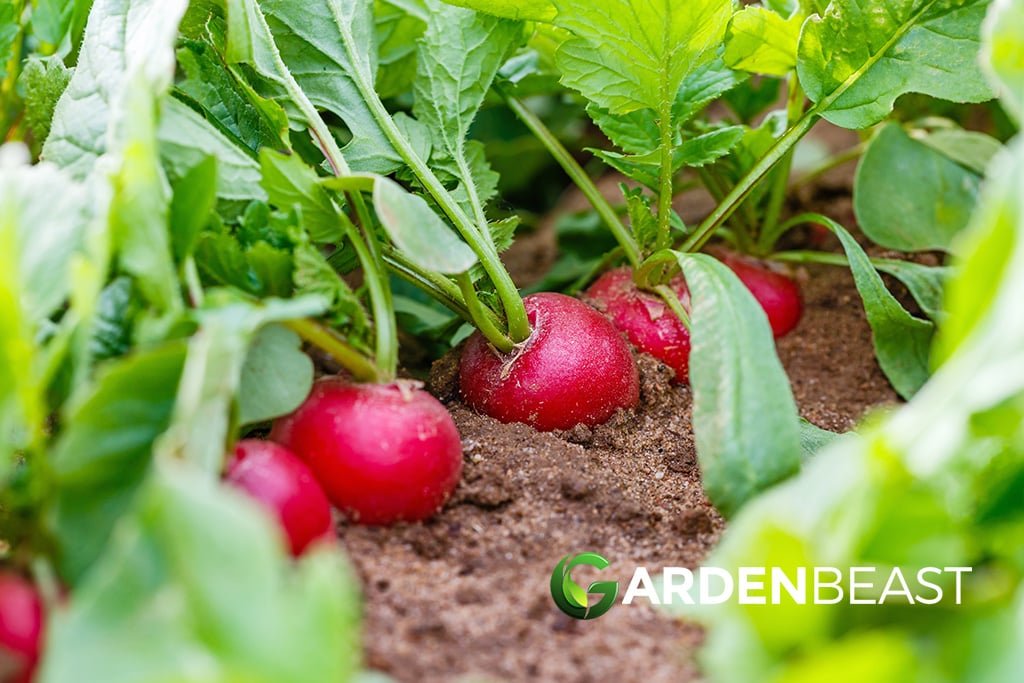So, you’ve decided to grow some radishes in your garden and want to make sure they thrive. Well, let me tell you, choosing the right companions for your radishes is crucial. In this article, we’ll explore the plants that you should steer clear of when planting your radishes. By avoiding these companion plants, you’ll ensure that your radishes grow to their full potential and don’t face any detrimental effects from their neighbors. Let’s jump right in and discover what to keep away from your radishes for a successful and abundant harvest.
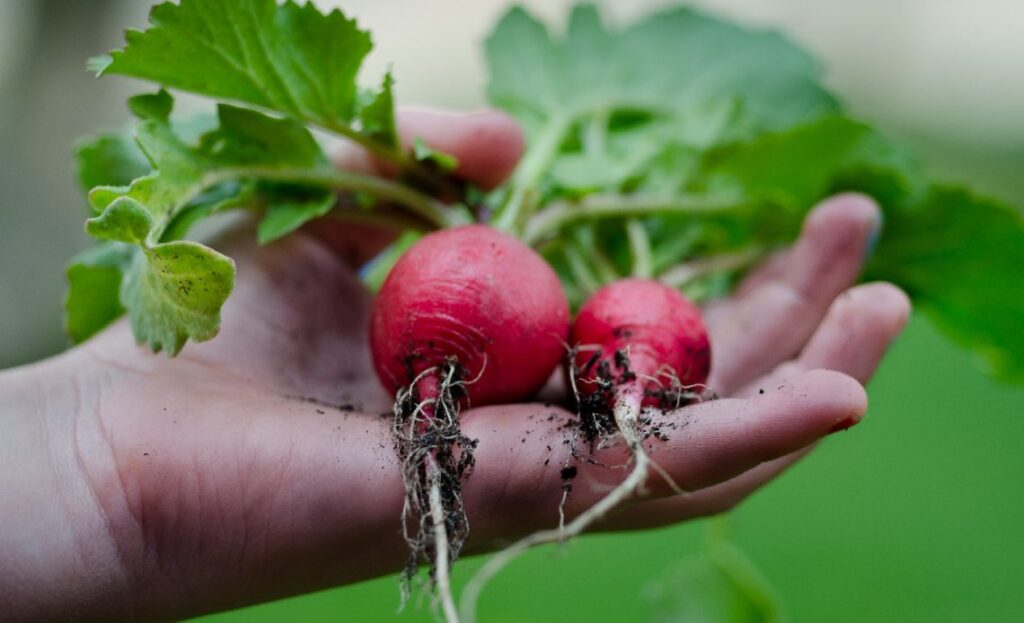
Plants that Attract Pests and Diseases
Aphid-Attracting Plants
When planning your garden, it’s important to consider the plants that may attract pests to your radishes. One such group of plants is known to be aphid-attracting. Aphids are tiny insects that feed on the sap of plants, causing damage and potentially transmitting diseases. Some plants, such as Nasturtiums and Mustard Greens, are particularly attractive to aphids. Avoid planting these alongside your radishes, as they may invite an infestation that can harm both crops.
Disease-Prone Plants
Another aspect to be mindful of when companion planting with radishes is the risk of diseases. Certain plants are more prone to diseases that can easily spread to neighboring crops, including radishes. For example, tomatoes and potatoes are susceptible to various diseases, such as blight and late blight. These diseases can quickly spread and harm healthy radish plants. It’s best to keep radishes and disease-prone plants separate to safeguard your harvest.
Plants that Compete for Nutrients and Space
Thick and Fast Growing Plants
Radishes have a relatively short growing season, typically maturing within a month or so. However, some plants have thick foliage and grow rapidly, creating competition for both nutrients and space. For instance, sunflowers and corn grow quickly, taking up a significant amount of space and drawing nutrients away from radishes. If planted nearby, these larger plants may overshadow the radishes and restrict their growth. To ensure your radishes have adequate resources, avoid planting them in close proximity to thick and fast-growing plants.
Plants with Similar Roots
When it comes to companion planting with radishes, it’s important to consider plants with similar root structures. Some plants, like carrots and beets, have a similar root shape and grow at a similar depth as radishes. Planting them together can lead to overcrowding of the soil, limiting the growth of both crops. It’s advised to separate radishes from these plants to allow their roots to develop fully and ensure optimal nutrient absorption.
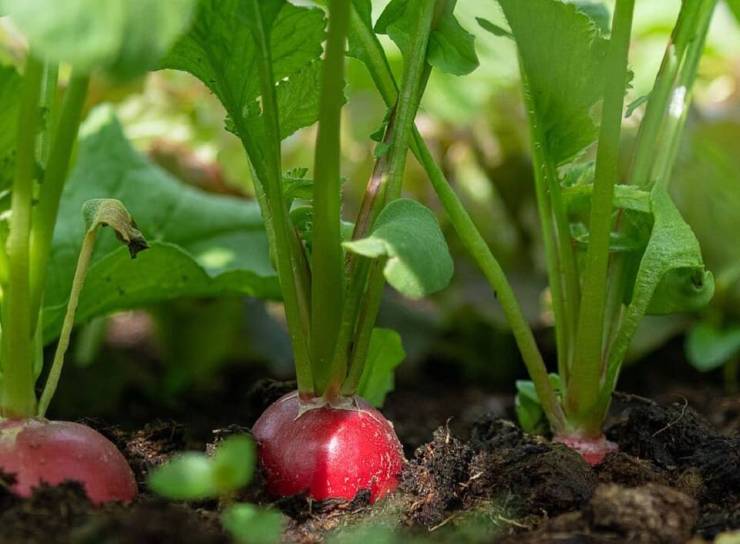
Plants that Produce Harmful Chemicals
Allelopathic Plants
Certain plants possess allelopathic properties, meaning they release chemicals that can inhibit the growth of surrounding plants. While these plants may boast other benefits, such as repelling pests, they can negatively impact the growth of radishes. Some examples of allelopathic plants include fennel and sunflowers. Their chemical compounds can suppress the growth of nearby radishes and impede their development. To support the healthy growth of your radishes, it’s best to avoid planting them alongside allelopathic plants.
Plants that Affect Flavor and Growth
Strong-Scented Plants
While aroma is a delightful aspect of gardening, strong-scented plants can have an impact on the flavor of neighboring radishes. Plants like onions and garlic emit pungent odors that can transfer to radishes, potentially altering their taste. To maintain the pure flavor of your radishes, it is recommended to keep them separate from strong-scented plants.
Plants that Slow Radish Growth
Some plants have characteristics that can unintentionally stunt the growth of radishes. For example, members of the Brassica family, including cabbage and broccoli, have extensive foliage that can shade radishes and hinder their growth. Similarly, beans and peas have a dense and robust structure that can overshadow smaller radish plants. To allow your radishes to thrive and reach their full potential, it’s best to avoid planting them next to these types of crops.
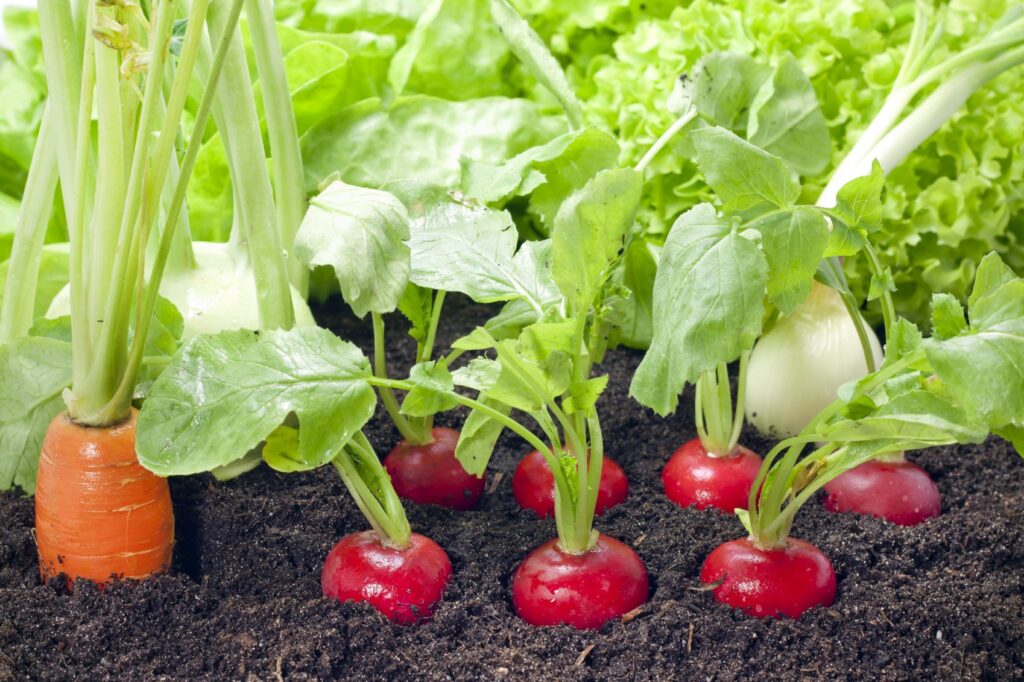
Plants that Attract Beneficial Insects
Plants Attracting Predatory Insects
Companion plants can also play a role in attracting beneficial insects to your garden. These helpful insects can act as natural predators, keeping pest populations in check. For instance, planting flowers like marigolds or herbs like dill and cilantro can invite ladybugs, lacewings, and hoverflies, which prey on aphids and other harmful insects. By providing a habitat for these beneficial insects with the right companion plants, you can help protect your radishes from pest infestations.
Plants that Cause Physical Damage
Plants with Invasive Roots
Certain plants are known for their invasive root systems, which can cause physical damage to neighboring crops. Trees, such as willows or invasive bamboo, have aggressive roots that can disrupt the soil structure and even penetrate the radishes’ growing area. These invasive roots can lead to nutrient deficiencies and hinder the growth of radishes. To avoid potential damage, it is advisable to keep these plants at a distance from your radish patch.
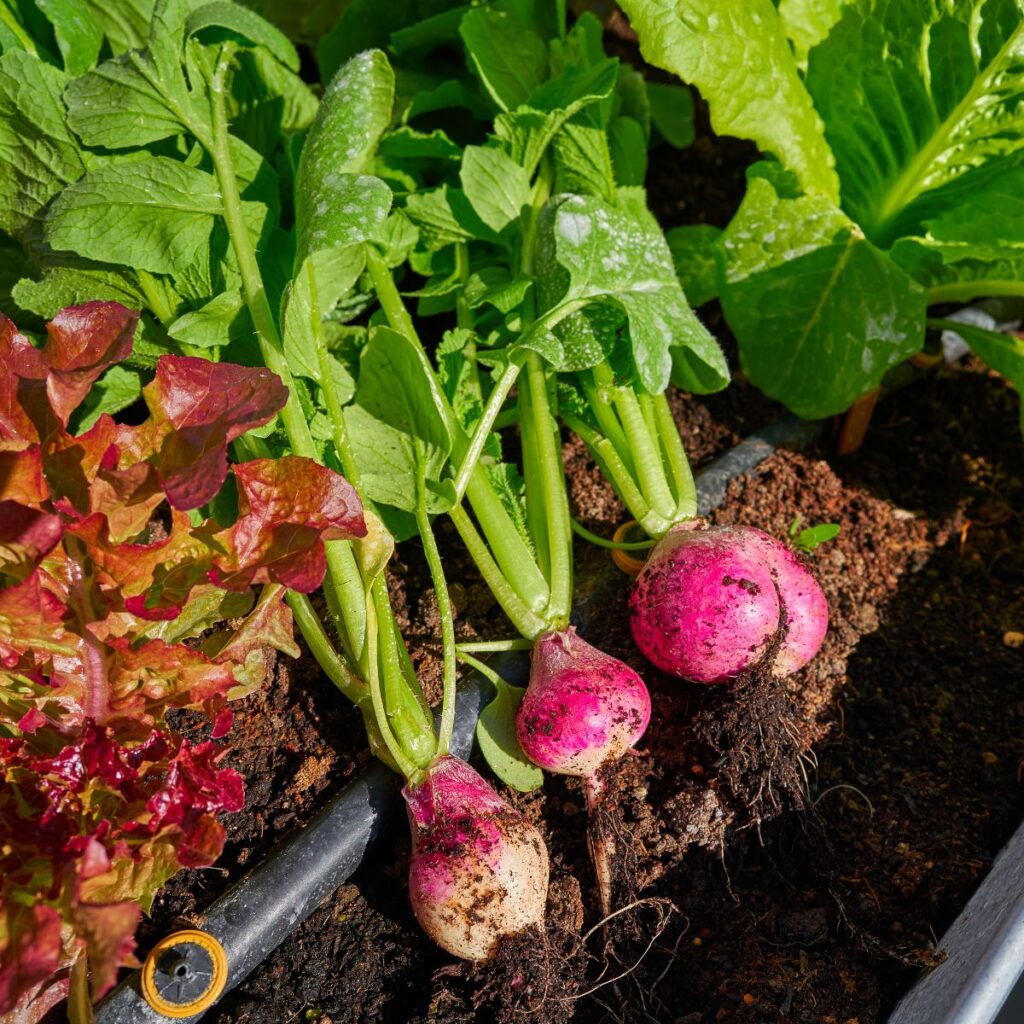
Plants that Shade or Stunt Radish Growth
Tall and Bushy Plants
Another factor to consider when companion planting with radishes is the potential shade cast by taller and bushier plants. Tall plants like sunflowers or bushy plants like tomatoes can create a shadow that deprives radishes of vital sunlight. Radishes require plenty of direct sunlight to develop strong roots and produce flavorful bulbs. Therefore, it is recommended to avoid planting tall and bushy plants immediately adjacent to your radishes, allowing them to bask in the sun without obstruction.
Plants with Similar Growth and Harvest Time
Plants with Overlapping Lifecycles
To make the most of your garden space and optimize the yield of your crops, it’s beneficial to choose companion plants with varying growth rates and harvest times. Unfortunately, planting species with overlapping lifecycles can create overcrowding and result in a more limited harvest. For instance, radishes and lettuce both have short growing cycles. Planting them too close together may lead to overcrowding and restricted growth. To maximize the potential of your radish patch, it’s advisable to select companion plants that have different growth rates and harvest times.
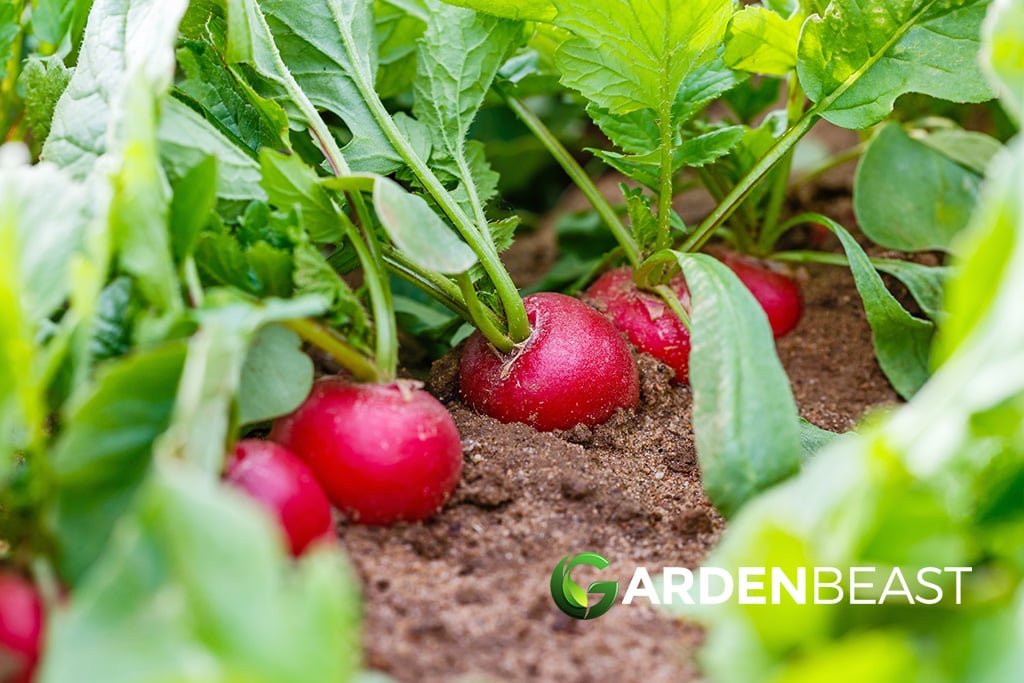
Plants that Can Tangle Radish Leaves
Plants with Twining Vines
Some plants use twining vines to support their growth, which can pose a problem when paired with radishes. Vining plants like cucumbers and squash may intertwine with radish leaves, tangling and damaging them. This can hinder the radish plants’ ability to photosynthesize and negatively impact their development. To ensure healthy leaves and optimal growth, it’s best to keep radishes away from plants with twining vines.
Specific Companion Plants to Avoid with Radishes
Brassicas
The Brassica family, which includes cabbage, broccoli, and cauliflower, should be avoided as companion plants for radishes. These leafy greens have a similar growth rate and can overshadow the radishes, limiting their access to sunlight. Additionally, planting radishes near Brassicas can attract common pests such as cabbage worms and flea beetles, which may harm both crops.
Mustard Greens
While mustard greens are flavorful and nutritious, they can hinder radish growth. Mustard greens have thick foliage that can overshadow radishes, reducing their exposure to sunlight. This can result in weaker radish bulbs and less pronounced flavors. To allow your radishes to thrive, it’s best to plant them separately from mustard greens.
Cabbage Family
Plants belonging to the cabbage family, such as kale and collard greens, share a close genetic relationship with radishes. However, planting them together can lead to competition for nutrients and space. The cabbage family plants tend to have large and broad leaves, which can shade the radishes, stunting their growth potential. To avoid crowding and maximize the growth of both crops, it’s advised to separate radishes from the cabbage family.
Beans and Peas
While legumes like beans and peas can fix nitrogen in the soil, benefiting neighboring plants, they may not be ideal companions for radishes. Bean and pea plants grow tall, resulting in shade that can hinder the growth of radishes. Furthermore, their spreading roots can compete with radishes for essential nutrients. To ensure optimal growth for your radishes, consider keeping them separate from these legume crops.
Carrots
Although radishes and carrots share a similar shape and growth habit, they should not be planted together as companion plants. Both crops have small root structures that require space to develop properly. When planted too close, the roots can become intertwined, leading to irregular growth patterns and potential damage during harvesting. Give your radishes and carrots their own designated areas to thrive independently.
In conclusion, when planning your radish garden, it’s essential to consider the various factors that can impact their growth and success. Avoid planting radishes alongside aphid-attracting plants and disease-prone crops to protect them from pests and diseases. Be mindful of plants with invasive roots that can physically damage your radishes and those that produce harmful chemicals that stunt their growth. Instead, focus on attracting beneficial insects and selecting companion plants that complement radishes in terms of their growth habits, harvest times, and root structures. By avoiding specific companion plants like Brassicas, mustard greens, and the cabbage family, you can ensure that your radishes have the best chance to thrive and produce tasty, vibrant bulbs.
